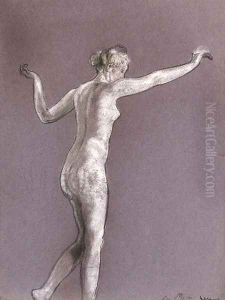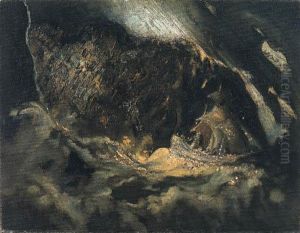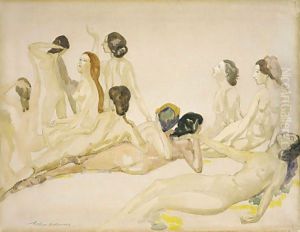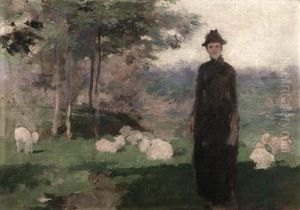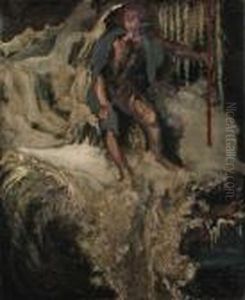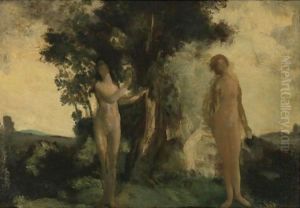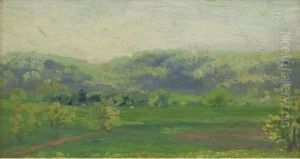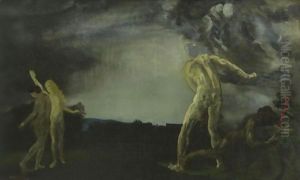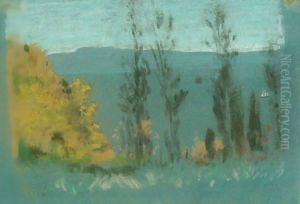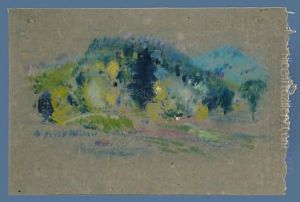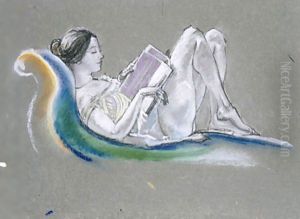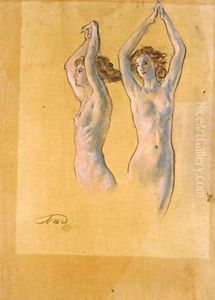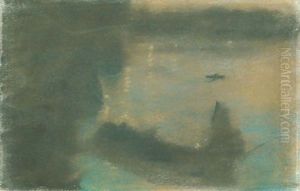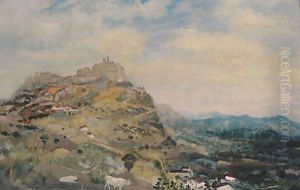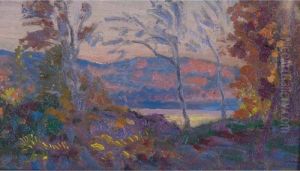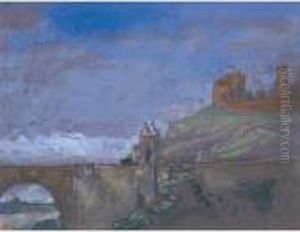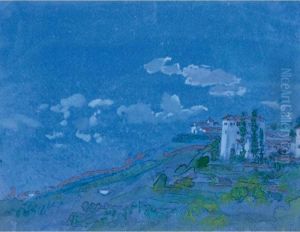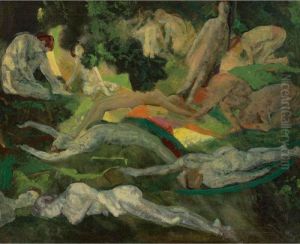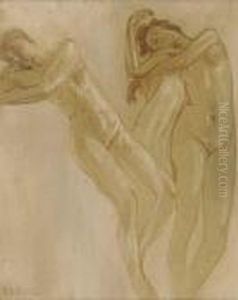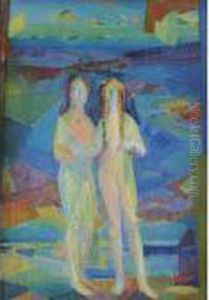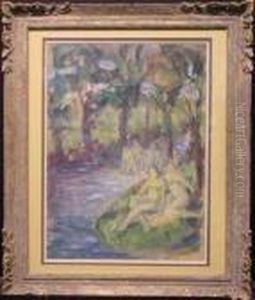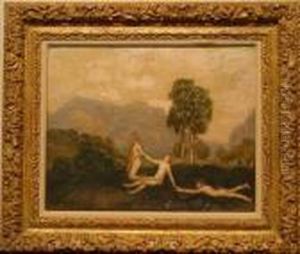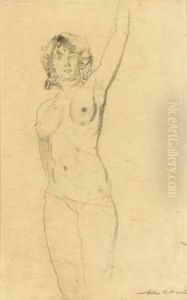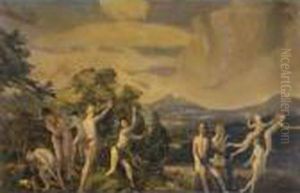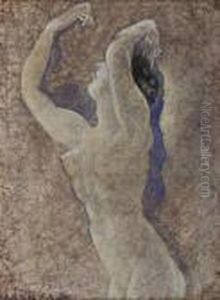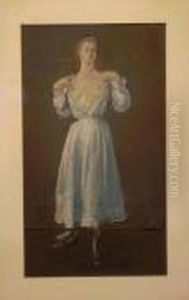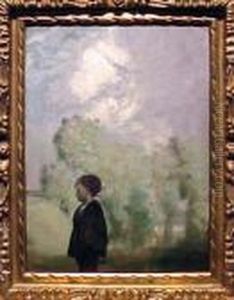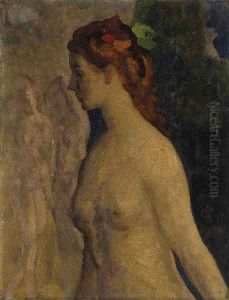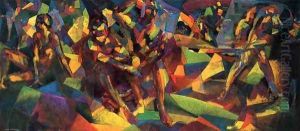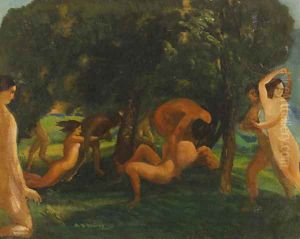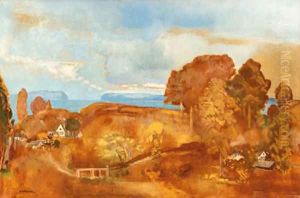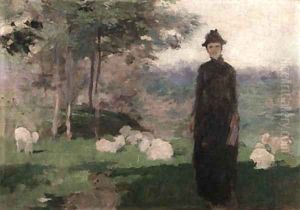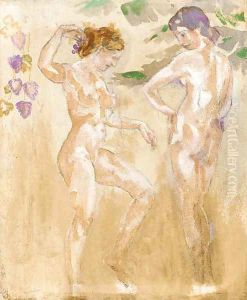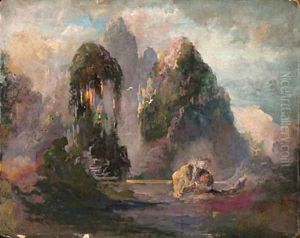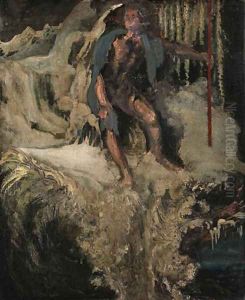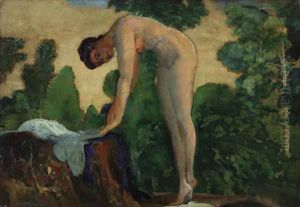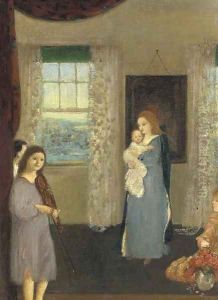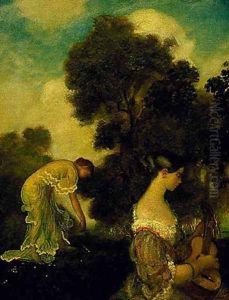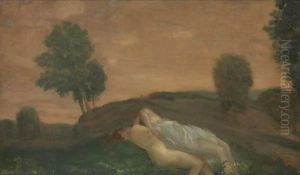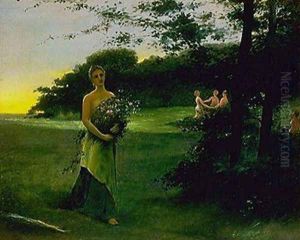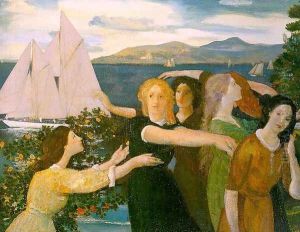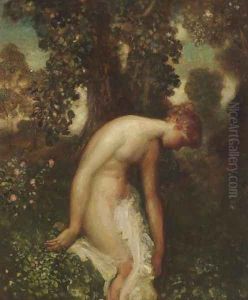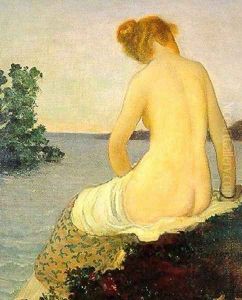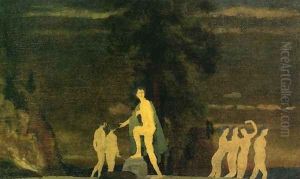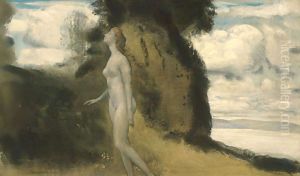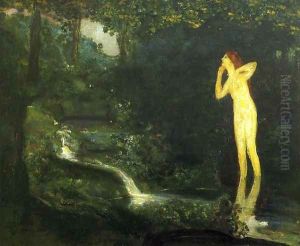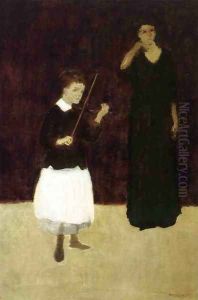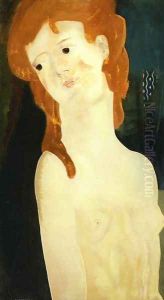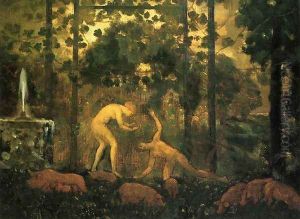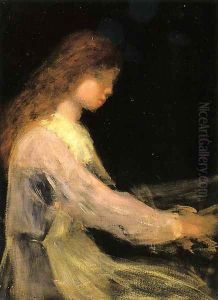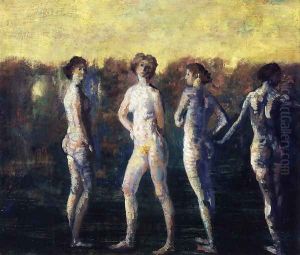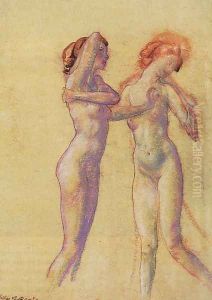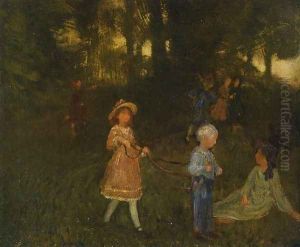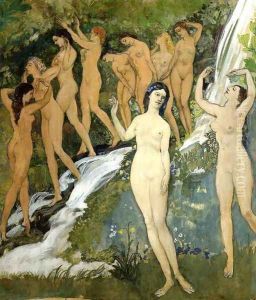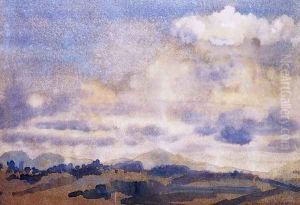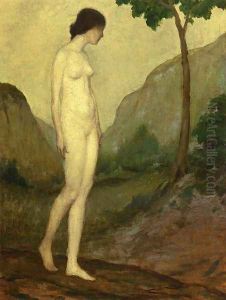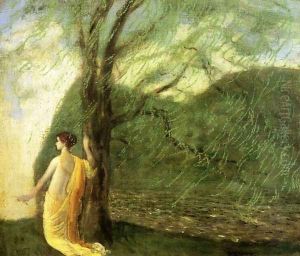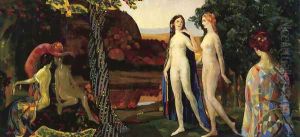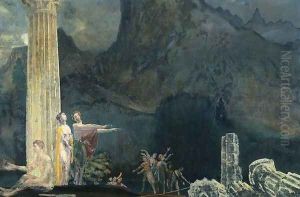Arthur Bowen Davies Paintings
Arthur Bowen Davies was an influential American artist and a key figure in the early 20th century American art scene. Born on September 26, 1862, in Utica, New York, Davies grew up in a modest environment and displayed an early interest in drawing. Despite the lack of formal artistic training in his youth, Davies was determined to become an artist. He eventually moved to Chicago and then to New York City, where he studied at the Art Students League and the National Academy of Design.
Davies's work is often characterized by its dreamlike quality and ethereal subjects. He was particularly known for his skillful use of color and his ability to evoke a sense of otherworldliness. While his early work was more realistic, he gradually shifted toward symbolism and a more decorative style. Davies's paintings often depicted idealized, pastoral landscapes populated by nymphs and other mythical figures, reflecting his interest in the imagination and the fantastical.
Aside from his artistic endeavors, Davies played a vital role in organizing the 1913 Armory Show, which was the first large exhibition of modern art in America and introduced the American public to European avant-garde painters like Vincent van Gogh, Pablo Picasso, and Marcel Duchamp. Davies served as the president of the Association of American Painters and Sculptors, which coordinated the event. The Armory Show was a pivotal moment in American art history, as it challenged the conservative art world and paved the way for the acceptance of modernist approaches.
Throughout his career, Davies was a prolific artist, producing a vast body of work that included paintings, drawings, and prints. He was also an influential mentor to younger artists and a champion of modern art in the United States. His work was well-received during his lifetime and was exhibited at various prestigious venues, including the Museum of Modern Art in New York.
Davies's personal life, however, was complicated. He maintained a secretive life, being married to one woman while leading another life with a second family under an assumed name. This aspect of his life was kept hidden until after his death in Florence, Italy, on October 24, 1928. Despite the complexities of his personal life, his contribution to American art remains significant. Davies's work continues to be studied and admired for its beauty and its role in the transition of American art from traditional representational styles to modernist abstraction.
